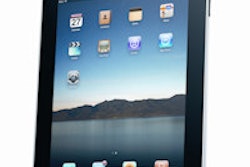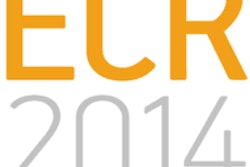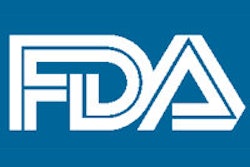
For a relatively young technology, Apple's iPad has already wrought huge changes in radiology, affecting education, image viewing, and interactions with referring physicians, Dr. Elliot Fishman told attendees on Tuesday at the International Symposium on Multidetector-Row CT in Washington, DC.
"The iPad has in many ways had an impact on everything that we do in radiology," said Fishman, a professor of radiology, oncology, and surgery at Johns Hopkins Hospital.
There are several hundred iPad radiology applications currently available, with new ones being introduced each day. These include apps from academic journals, professional organizations, and vendors, Fishman said.
The use of the iPad has also attracted a flurry of research activity. A search on PubMed for "iPad and medicine" journal articles over the past couple of years turns up 55 citations, while searching on "iPad and radiology" reveals 22 citations. Even just a "radiology and CT" search finds seven citations, he said.
Research has focused on the iPad in education as well as for viewing images. "It's really front and center in everything we're speaking about in terms of radiology," he said.
U.S. Food and Drug Administration (FDA) regulation has an effect, of course, on the use of mobile devices for reviewing images, Fishman said.
"If you look at many of the different devices and things that the FDA focuses on, their biggest concern really tends to be safety, whether a radiologist would sit in a darkroom and look at an image, or whether they would be sitting on a beach looking at an iPad in the bright sunlight where you can't even see what color the iPad is, let alone what the images look like," Fishman said.
Image viewing apps
A number of companies offer iPad image viewing applications. Johns Hopkins uses the syngo.via WebViewer (Siemens Healthcare).
"Many [vendors] have demo versions on the Web, so I would recommend that you download a version and actually play with it," he said. Being able to download apps yourself also avoids the need to deal with your IT department.
Meanwhile, the Retina display on the third-generation iPad really makes a difference when it comes to looking at images, he noted.
"If you look at the resolution (2,048 x 1,536), that typically puts to shame most of the monitors that you have in typical reading rooms and surely the monitors that most people have at home when they're doing teleradiology or remote consulting," he said.
Important app features
Fishman emphasized the importance of speed in an image viewing app.
"Both radiologists and nonradiologists have limited capability of waiting for download times and download speeds," he said. "We're able to download about 1,000 512 x 512 images in under five seconds, and that's what you're dealing with on a typical network at Starbucks or if you're using Verizon or AT&T. And once you download a dataset, you can do real-time 3D imaging running at about 10 to 15 frames per second, which basically is interactive."
Image quality will vary by system. Also, some may support interactive image rendering, rather than just providing a review of preprocessed images.
Because mobile devices utilize touchscreens and have limited real estate, it's important for apps to have simple buttons, Fishman said. If an app isn't easy to use, then training becomes an issue.
"You don't want to do training," he said. "At Hopkins we have 100 radiologists and 3,600 other physicians. If you can't train 100 radiologists, you surely can't train 3,600 other physicians. So things need to be very logical and very much like the Apple model of the same process across all different applications."
It's also important to have the same image quality on mobile devices as you do on a traditional diagnostic display.
"If you're going to interpret things for diagnosis, you need to have the same quality, and that's true for [radiologists] as well as the referring physician," he said.
Use cases
The iPad allows radiologists to have remote access and availability, anywhere and at any time. That's also true for nonradiologists, who can use the device for patient consultation.
"It really extends our control of imaging; it extends our ability to do better imaging and impact patient care," he said.
Some limitations of mobile devices include network connectivity, HIPAA and security issues at select institutions, a perceived challenge to radiology from unlimited access to imaging studies, and a practical concern by some whether it's a good thing to be available 24/7/365, Fishman said.
Going forward, there is really no imaging study that can't be viewed on a mobile device, according to Fishman.
"Whether it's PET/CT or MR or doing real-time ultrasound, those apps are currently or becoming available, so that's something that's not going to be an issue," he said.
Some future directions could involve utilizing other capabilities such as Apple's Siri technology for voice dictation and voice commands, and Skype for consultation with referring physicians and patients. Devices from Samsung or Microsoft could also play a role.
A big challenge over the next few years will be security, Fishman said. The FDA issued a communication this week addressing recent cybersecurity issues affecting medical devices (including mobile devices) and hospital networks.
"Security is going to be an issue, but I think there are ways around [that problem]," he said.



















